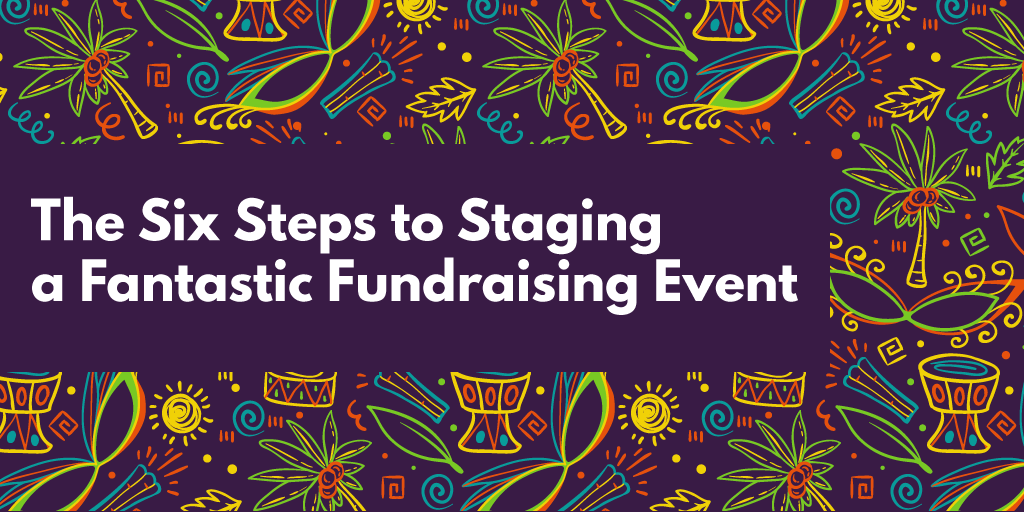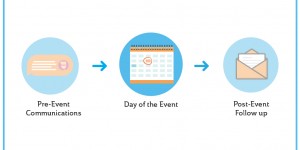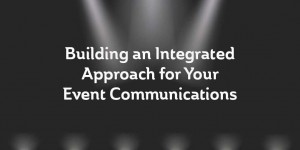As you know, the end of the year is a critical time for fundraisers. After all, 17 percent of overall giving occurs in December, according to Blackbaud’s 2018 Charitable Giving Report. So, it’s no wonder there’s such a focus on your year-end push.
But you can’t underestimate the power of a fantastic fundraising event in the spring!
Outside of year-end, the majority of giving takes place in May and June. Together these months account for another 17.9 percent of total giving, according to the report. And it’s no coincidence that this trend aligns with the peak of nonprofit event season.
Events are a great way for your organization to bring your mission to life and engage with donors. Attending should make donors feel like they are truly part of your organization and its work while inspiring them to do more.
But it takes a lot of effort to host a truly fantastic fundraising event. If you are holding one this spring, you should be planning now!
You need to engage with donors early and often, deliver an enriching experience, and follow up effectively if you want to make the most out of your nonprofit’s next event.

1. Let Your Data Decide
Like everything else in fundraising, data is your best friend. It can tell you who should be invited to your event, or what kind of event you should host!
When we think of nonprofit events, the first thing that comes to mind are fancy galas and dinners with high-profile donors. But an exclusive black-tie event may not be the right fit if your data shows your fundraising is driven by a large donor base with a smaller average gift size.
A fantastic fundraising event will play to the strengths of the organization. A more casual and inclusive event would be a better fit in this scenario. You can get more people in the door and secure more of those small-dollar donations your organization thrives on!
And if a gala is a better fit for your organization, use your data to prioritize who attends. You’re looking for donors who make more than one large gift per year, ideally who have attended one of your events before.
And unless you’re expecting a really big donation and you’re willing to cover their travel expenses, location is another huge factor.
2. Feature a Mission-Driven Brand
A fantastic fundraising event will feature a brand that re-enforces the organization’s mission. And the idea behind your brand should be as clear on the day of the event as in your invitations and other communications.
The first step is coming up with a catchy name that represents how the event ties into your goals. For example, an animal rights organization hosting a bowling night could go with “Pins for Paws.” Or, if your hosting a more formal dinner event, “Plates for Paws”.
Then you will determine what images, messages, and design elements will make up your event’s brand. Take a moment and think of some elements that could make up the brand for one of the examples in the last paragraph.
…
A strong name makes your job so much easier, doesn’t it!
Next, you will need to feature this brand in your pre and post event communications, as well as at the event itself. Doing so will help connect the dots between your messages and remind donors why the event is so important to your goals.

3. Use Integrated Communications
But you don’t want to put all that hard work into building you event brand and only reach part of your intended audience. So, an integrated approach to your event communications is critical.
First, introduce your event by emailing a digital save the date to prospective attendees. You should include the option to add your event to their calendar in Outlook or Gmail. Try re-sending to those who don’t open a few days later, at a different time, and/or with a different subject line. Then, follow up with a save the date mailer for those who have yet to respond.
Generally, event invitations should be sent through direct mail, especially if you are hosting a higher-key event. But you can send email or text message reminders to follow up with important donors you don’t hear back from. Or better yet, pick up the phone and give them a call!
Your communications should also be supported by an event microsite. This will serve as a digital home for your event. Attendees should be able to register, donate, and find important information about the event. Afterwards, you can update the site with pictures from the event, details about how much you raised, and the impact it will have on your goals.

4. Create Giving Opportunities
And of course, a fantastic fundraising event wouldn’t be complete without opportunities to give! After all, where do you think those high numbers of donations in May and June come from?
While a portion of giving in June can be credited to effectively making an ask in your event follow up, it’s important to create opportunities to give at the event itself.
First, identify opportunities where you can ask attendees to donate. If you’re hosting a gala, you may choose to do so right before a featured speaker or in between meal courses.
You could try to direct users to you online giving page. But attendees may have trouble following along, especially if you don’t have the most mobile-friendly website.
Instead, look into running a text-to-give campaign at your next event. It’s much easier for attendees to text a keyword and dollar amount to a number than it is to go to your website, find the donation page, fill out a form, and process a transaction.
When attendees see everyone else at their table pulling out their phone to make a text message donation, they will be inspired to give as well. Small gifts can add up fast, even if you only secure a few dollars from each attendee.
5. #GetSocial
Encouraging attendees to get active on social media is another great way to bring in a few more donations and raise awareness for your cause.
First, create a hashtag that supports your event’s brand. This will help your audience see all the user-generated content from your event in one place. #Pins4Paws or #Plates4Paws are great options using our example from earlier in this post.
Then, encourage attendees to post pictures using the event hashtag. If they donate at your event, encourage them to let their followers know about it!
You might want to set up a Twitter wall at your event, especially if your audience is particularly active on the platform. As attendees tweet using your hashtag, their posts are displayed in real time on a large screen at your event. This encourages twitter users to be more active and will get people talking about your fantastic fundraising event online and off.

6. Don’t Forget the Follow Up
Your work is not done when attendees walk out the door. As you know, donors love to hear “thank you”. And you do follow up every donation during the year with a sincere thank you, right?
So why wouldn’t you do the same when someone took time to come to your event?
Take this opportunity to make your attendees feel special. You can use variable data to send each recipient a photo of themselves at the event.
If you’ve finalized your fundraising totals for the event and reached your goal, thank your attendees who gave for their contribution. If you’re short of your goal, you can make another ask in your follow up and encourage donors to help you over the hump.
You can segment your audience into those who gave at the event and those who did not. This way, you can have a version that is more aggressive for those who didn’t give, and a version with a softer or no ask to those who already donated at the event.
As we mentioned earlier, don’t forget to update your event’s website with pictures and relevant information after the event. And be sure to include a link to the site in your follow up emails.
You might also include a short survey to ask donors for feedback on your event. This lets them know that you value their input, not just their money. Ask them what you can do to put on an even more fantastic fundraising event next year!







